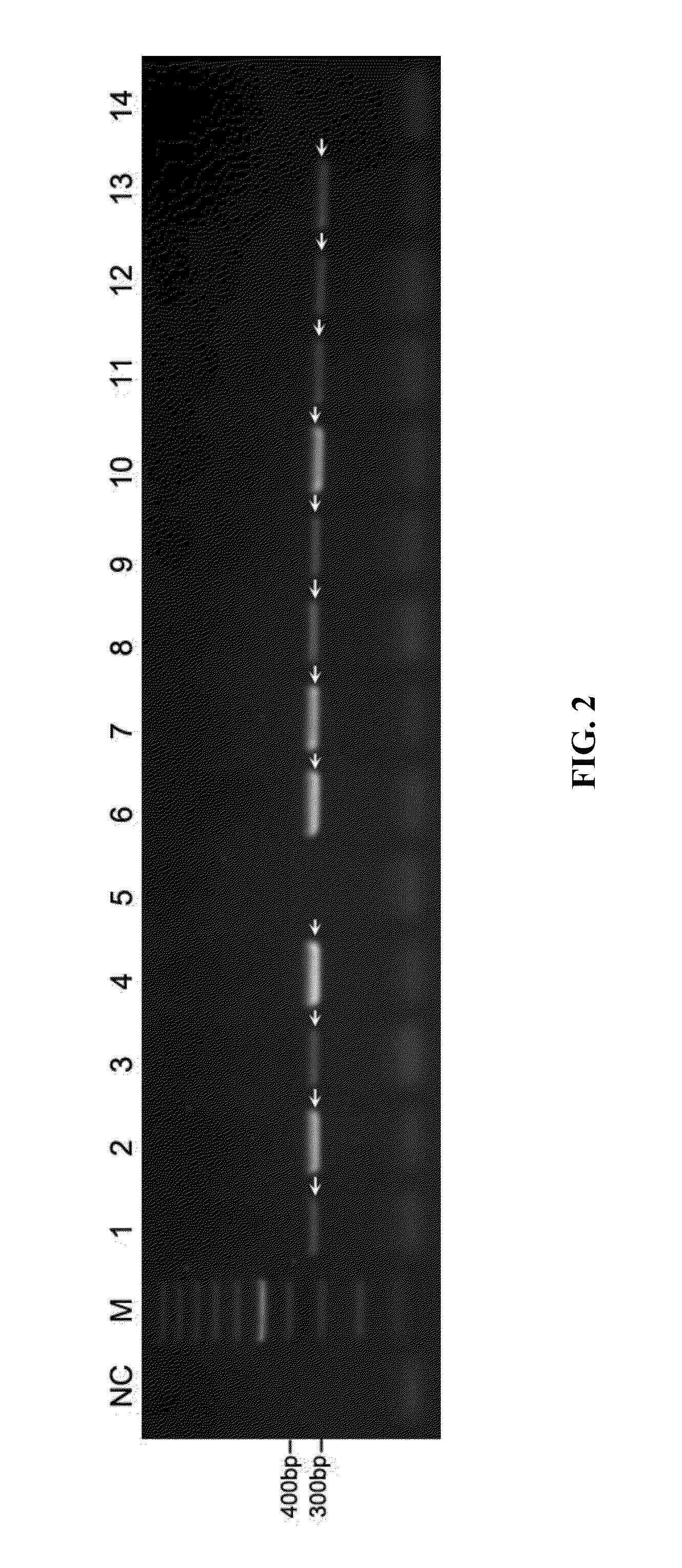Method for identifying HB red-corolla upland cotton
a technology of red-corolla and cotton, applied in the field of agricultural biotechnology, can solve the problems of long growth time of 2-3 months, plenty of labor and farmlands, etc., and achieve the effect of rapid identification, efficient and accurate quality control, and rapid identification of cotton seed heredity purity
- Summary
- Abstract
- Description
- Claims
- Application Information
AI Technical Summary
Benefits of technology
Problems solved by technology
Method used
Image
Examples
example 1
[0026]The experimental materials are the F2 separating population individuals No. 1-16 which are obtained from self-cross of F1 red-corolla individuals from hybridization of LuHB22 and its white-corolla NIL. The purpose of the experiment is to isolate and determine the HB red-corolla individuals from white ones.
[0027]1. Extraction of Genomic DNA of Cotton[0028]1) seeds of target materials were cultivated in germination boxes at 30° C. with light treatment for a week until euphylla sprouted;[0029]2) 0.1 g of young leaves was collected, ground into powder in liquid nitrogen, and transferred to 1.5 mL tubes. 600 μL of 2% CTAB solution pre-heated at 65° C. was added (which contained 1.4 M of NaCl, 0.1 M of Tris-HCl, 20 mM of Na2EDTA, 2 wt. % of CTAB, 2% of PVP, 1 v. % of beta-mercapto-ethanol) to yield a mixture, which was then oscillated evenly, and heated in a water bath at 65° C. for 30 min to 2 h;[0030]3) a solution comprising of chloroform and isoamyl alcohol with a 24:1 volume rat...
example 2
[0038]The experimental material of this example was different HB red-corolla cotton strains and their white-corolla NILs, comprising four different LuHB118 strains, eight different LuHB28 strains and their white-flower NILs. The experimental purpose is to examine the PCR method in different HB red-corolla cotton strains or varieties.
[0039]Technical scheme was the same as that of Example 1. Cotton leaf DNA was extracted, PCR amplification was performed in the PCT system, and PCR products were separated on a 1% agarose gel prepared with 1×TAE buffer. The gel was stained, then visualized and photographed under UV light.
[0040]As shown in PCR electrophoretogram of FIG. 2, Lanes 1-4 were identified to be LuHB118 strains of red corollas, due to containing specifically amplified bands with a size of 330 bp as indicated by arrows; Lane 5 was a white-flower LuHB118 NIL, due to not containing the 330 bp of specifically amplified band; Lanes 6-13 were LuHB28 red-corolla strains, due to containi...
PUM
| Property | Measurement | Unit |
|---|---|---|
| gel electrophoresis | aaaaa | aaaaa |
| color | aaaaa | aaaaa |
| genetic stability | aaaaa | aaaaa |
Abstract
Description
Claims
Application Information
 Login to View More
Login to View More - R&D
- Intellectual Property
- Life Sciences
- Materials
- Tech Scout
- Unparalleled Data Quality
- Higher Quality Content
- 60% Fewer Hallucinations
Browse by: Latest US Patents, China's latest patents, Technical Efficacy Thesaurus, Application Domain, Technology Topic, Popular Technical Reports.
© 2025 PatSnap. All rights reserved.Legal|Privacy policy|Modern Slavery Act Transparency Statement|Sitemap|About US| Contact US: help@patsnap.com


